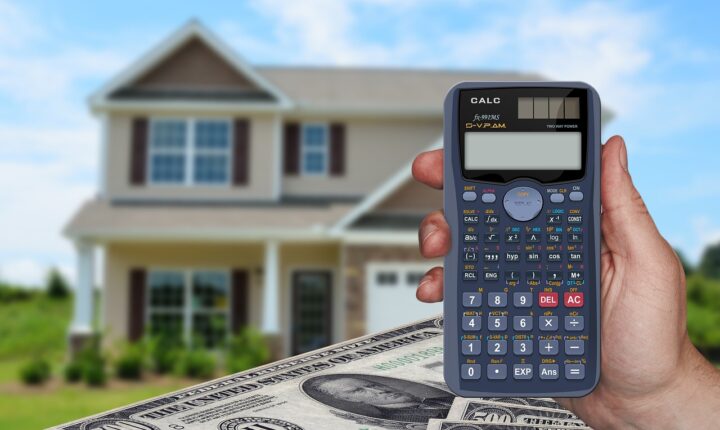Is Zillow a no-go?
The Use and Misuse of Online Home Value Estimates
Whether you’re thinking of selling your property or just piqued with curiosity, we’ve all been tempted to pull up on an online home value estimator now and again. After all, how convenient is that? Just a few clicks and an inputted address and you’ve got a real dollar amount—one that could make its way into your pocket as easy as list, show, and sold.
But how accurate are these estimates, really? Everest Loan Officer Sharon Dermer has the answers.

Why AVMs Are All the Rage
Online platforms like Zillow, Redfin, and Realtor.com rely on Automated Valuation Models (AVMs) to provide instant home value estimates. These programs pull from massive databases of public records, recent sales, tax assessments, listing data, and user-submitted details to calculate a property’s approximate worth.
“AVMs use statistical modeling, machine learning algorithms, and historical data trends to generate their numbers,” says Sharon. “This is all great in theory, but it’s important to keep a very important term in mind: error rate.”
Let’s use Zillow as an example: the company claims a nationwide median error rate of about 2.4% for homes that are already on the market—and 7.5% for those that aren’t yet listed.
Sounds great, right? But the devil is in the details.

Where AVMs Fall Short
We’ve heard it from our clients time and time again: they get their estimated value, then their mind runs away with them. If the number is higher than they expected—well, there come the dreams of early retirement. If the number is lower than they thought—suddenly our client is doubting their decision to remodel the kitchen.
“The important thing to remember with these AVMs is that the goal is not necessarily accuracy,” explains Sharon. “The developers tend to be much more focused on speed and accessibility—which is great because it means that more people can access valuable information. The problem arises when people use this estimate as their only source for big decisions about their home.”
Some key limitations of AVMs include:
- Nuance Blindness – AVMs can’t always account for unique features of the property such as upgraded decor, outdoor views, or proximity to local hotspots (or noisy intersections!)
- Data Lags – AVMs partially rely on comparable sales. Unfortunately, these numbers may be vastly outdated, depending on how fast the market is moving at the time.
- Technical Errors – AVMs have a tendency to overlook off-market transactions and property miscategorizations, causing the estimated property to be matched with incomparable sales.
- Geographic Gaps – In rural areas (or others with lower sales volume), there’s not always enough recent data on surrounding properties or community developments. This makes calculations much less accurate.
One high-profile example of the limitations of AVMs is Zillow’s own failed home-flipping venture. In 2021, Zillow shut down its Zillow Offers program, citing the difficulty of accurately predicting home values at scale. The algorithm-based pricing model had a tendency to overpay for homes, leaving the company with significant financial losses—and inventory it couldn’t reliably resell.
“The Zillow home flip fail is a cautionary tale I always keep on the back burner for clients,” says Sharon. “It’s a great example of how automated models can go wrong—even for a tech giant whose entire business model is built on valuation.”

How to Use AVMs Wisely
After all that, you may be wondering if you should start avoiding online estimates entirely. Sharon knows where you’re coming from:
“I always say that AI is an amazing tool,” Sharon says. “but it’s meant to be a supplement to human ingenuity—not a substitute. AVMs can still be helpful starting points, especially if you’re thinking about buying or selling in the near future.”
Here’s the approach we recommend, using AVMs as a supplemental tool:
- Keep Your Property Info Updated – If the AVM you’re using allows homeowners to update key details about the property, take advantage of that. At the very least, look up your address first to see what kind of information they have on display.
- Compare Across Platforms – Don’t just rely on one site to get your estimate. Look at Zillow, Redfin, Realtor.com, and others to see a range of estimates. If the numbers vary widely, that’s a red flag that your property may not be a good fit for the AVM model.
- Get a Comparative Market Analysis (CMA) – Your local real estate agent can prepare a more accurate picture of the market in general using up-to-date listings, recent sales, and professional insights. This is much more customized than an AVM estimate and offers more information to determine your home’s sale value.
- Consider a Professional Appraisal – A certified appraiser provides a detailed, unbiased valuation of your property, grounded in real, boots-on-the-ground fieldwork. This is especially crucial for things like estate planning, refinancing or property disputes.

Here’s The Bottom Line
Online estimates are useful tools, but they’re just one piece of the valuation puzzle. AVMs are growing in popularity and capability, but they still can’t replace the expertise of a real estate professional or experienced loan officer who truly knows your market, your neighborhood, and your home’s unique selling points.
So next time you check your Zestimate, take it with a grain of salt—then follow up with a human touch.
Everest says: We know your neighborhood inside and out.
Everest Equity
Passionately serving home buyers
and homeowners since 2004
When you need to know your home’s value, trust our
diverse team of professionals to get you accurate answers.




